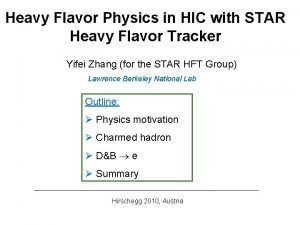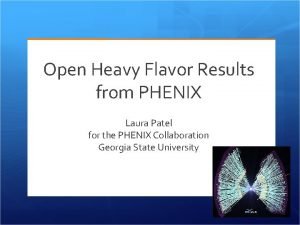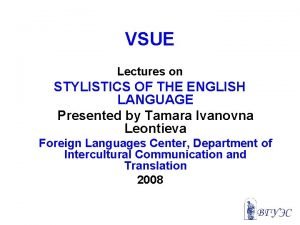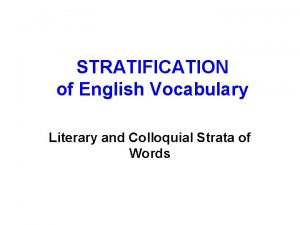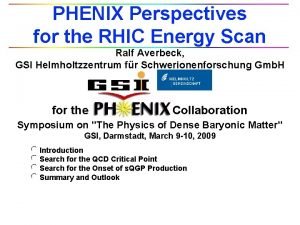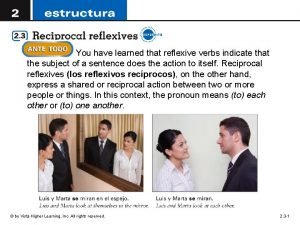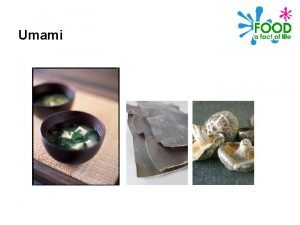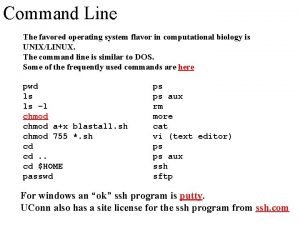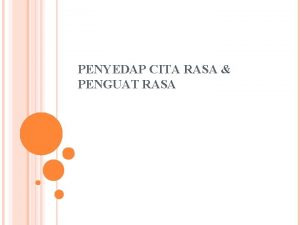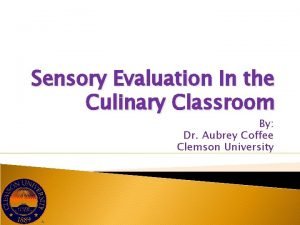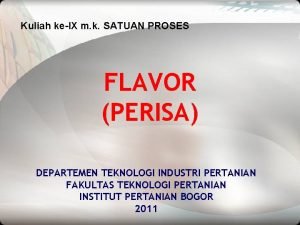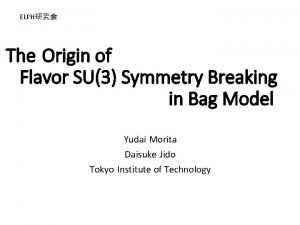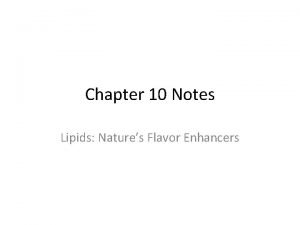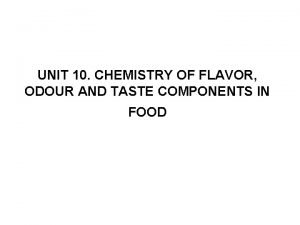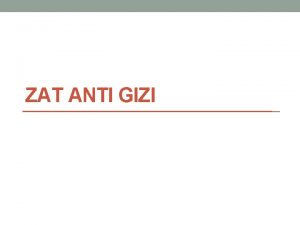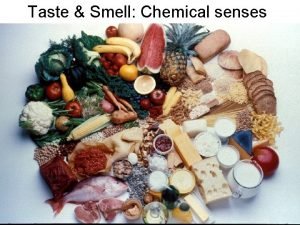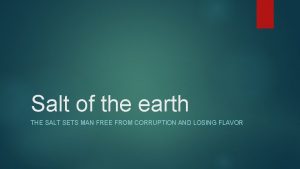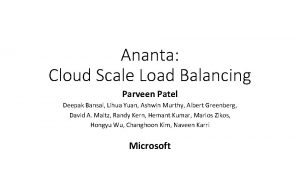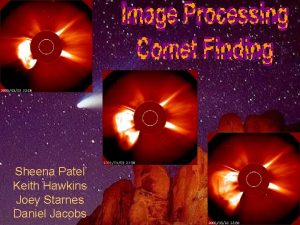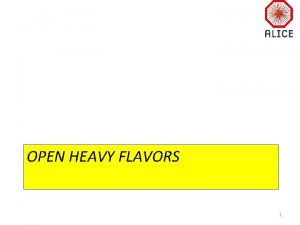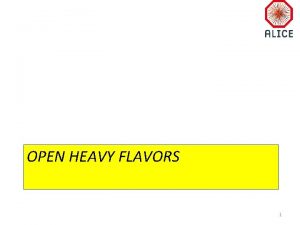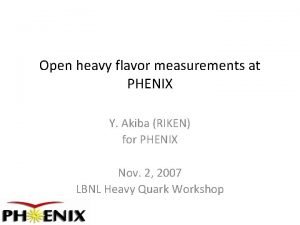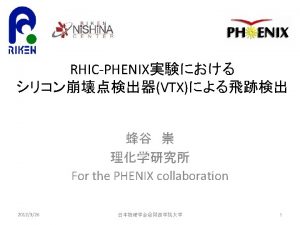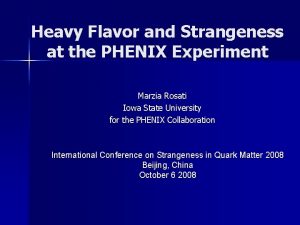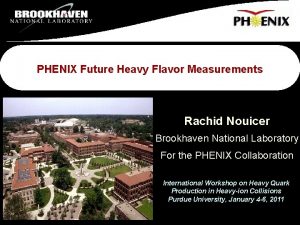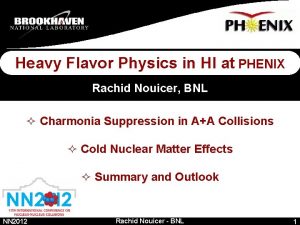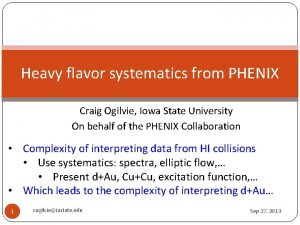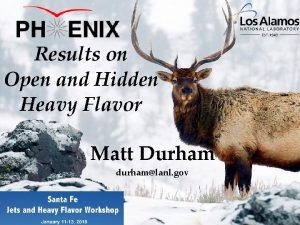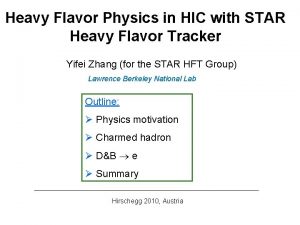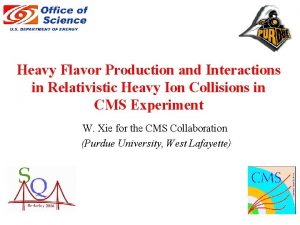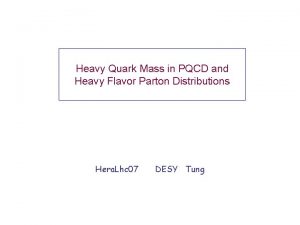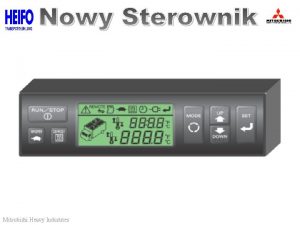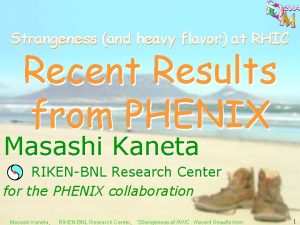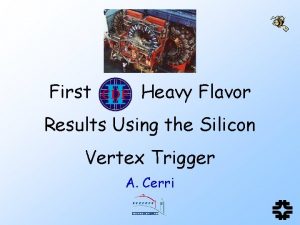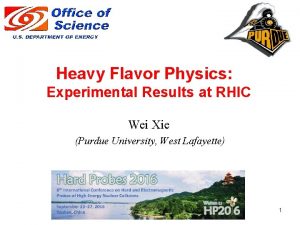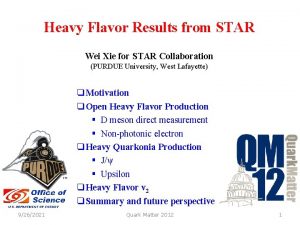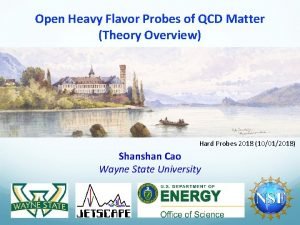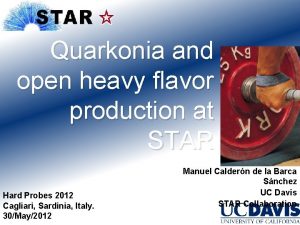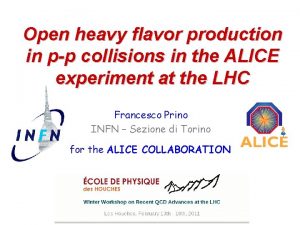Open Heavy Flavor Results from PHENIX Laura Patel



























- Slides: 27

Open Heavy Flavor Results from PHENIX Laura Patel for the PHENIX Collaboration Georgia State University

Outline • • • DIS (4/24/13) Motivation & Background PHENIX Heavy Flavor (HF) Results • • • p+p (charm & bottom cross sections) Heavy Ion (Cu+Cu, Au+Au) d+Au Summary 2 L. Patel (GSU)

Motivation • Heavy quarks can be used to probe medium properties. • Heavy quarks are produced early in the collision due to their large mass (~4. 2 Ge. V for b and ~1. 3 Ge. V for c). • Heavy quark production can be used as a test of p. QCD theory. DIS (4/24/13) 3 L. Patel (GSU)

Quantifying Medium Effects p+p measurements d+A measurements A+A measurements Baseline probe CNM effects probe HNM+CNM effects • Ncoll Averaged number of binary collisions Nuclear modification factors: R > 1 (enhancement) R = 1 (no medium effect or balance) R < 1 (suppression) DIS (4/24/13) 4 L. Patel (GSU)

Relativistic Heavy Ion Collider PHENIX STAR DIS (4/24/13) 5 L. Patel (GSU)

PHENIX Central arms: Hadrons, photons, electrons • |η|<0. 35 • pe > 0. 2 Ge. V/c • Δφ=π(2 arms x π/2) Forward rapidity arms: Muons • 1. 2<|η|<2. 2 • pμ > 1 Ge. V/c • Δφ = 2π DIS (4/24/13) 6 L. Patel (GSU)

Open Heavy Flavor Measurements • Indirect measurement of charm and bottom through semi-leptonic decay. • • DIS (4/24/13) Electrons at mid-rapidity Muons at forward/backward rapidity 7 L. Patel (GSU)

Single Leptons in p+p at 200 Ge. V PRL 97, 252002 (2006) DIS (4/24/13) • e and m baseline measurements in central and forward rapidity • Consistent with FONLL upper limit 8 L. Patel (GSU)

Charm & Bottom Cross Sections • PHENIX has multiple measurements for charm and bottom production. • DIS (4/24/13) All are in agreement with p. QCD values. 9 L. Patel (GSU)

Cu+Cu at 200 Ge. V • Cu+Cu collisions provide a cross over between d+Au and Au+Au. N =1 d+Au Cu+Cu coll • DIS (4/24/13) Au+Au Ncoll~1000 The medium created in central Cu+Cu collisions has a different density than central Au+Au 10 L. Patel (GSU)

Single Leptons in Cu+Cu • Suppression of muons from HF in most central collisions. Phys. Rev. C 86, 024909 (2012) • Larger suppression at forward rapidity. • Additional CNM effects are expected at forward rapidity. DIS (4/24/13) 11 L. Patel (GSU)

Single Leptons in Au+Au • Use single electrons from HF to study the medium. PRC 84, 044905 (2011) PRL 109, 242301 (2012) PRC 84, 044905 (2011) • Suppression in Au+Au for p. T>1. 5 Ge. V. • No suppression in d+Au • Suppression in Au+Au must be due to HNM effects. DIS (4/24/13) 12 L. Patel (GSU)

Disentangling Cold Nuclear Matter Effects • Difficult to conclude much in heavy ion collisions without a thorough understanding of CNM. • d+Au collisions provide an environment to probe CNM effects! • DIS (4/24/13) No QGP is expected to form. 13 L. Patel (GSU)

Cold Nuclear Matter Effects • Nuclear PDF is modified: Shadowing, Anti-shadowing, EMC, Saturation • Gluon saturation low x high x • Unlike quarkonia, there are no final state breakup effects! DIS (4/24/13) 14 L. Patel (GSU)

Single HF Leptons in d+Au PRL 109, 242301 (2012) • Suppression in the d-going direction • Rd. A ~1 in peripheral collisions • Enhancement in central collisions DIS (4/24/13) • Enhancement in the Au-going direction, similar to central region 15 L. Patel (GSU)

Future Work • A more detailed understanding of heavy quark energy loss requires separation of charm and bottom. • To accomplish, this PHENIX recently installed two silicon vertex tracker detectors. VTX+FVTX ( commissioned in 2011) and FVTX (commissioned 2012) DIS (4/24/13) 16 L. Patel (GSU)

PHENIX (F)VTX • • VTX installed in Run-11 & FVTX in Run-12. Will allow separation of B & D. • New results coming soon! DIS (4/24/13) 17 L. Patel (GSU)

Summary • PHENIX has multiple measurements for heavy flavor cross sections in p+p. • Heavy ion results show suppression beyond that expected from CNM. • d+Au results show some rapidity dependent modification in open heavy flavor. • Quantifying the HNM effects is an ongoing process. DIS (4/24/13) 18 L. Patel (GSU)

Backup DIS (4/24/13) 19 L. Patel (GSU)

Single e Signal Extraction Converter method Dominated by low stats of conv-in data (1 day) Cocktail method Excellent agreement between two independent methods DIS (4/24/13) Dominated by uncertainty on pion spectra 20 L. Patel (GSU)

Single Muon Analysis • Background • • • Hadron cocktail input tuned to match data distributions • • DIS (4/24/13) Decay muons from light vector mesons Punch through hadrons Decay muon z-vertex dependence “stopped” hadron spectra 21 L. Patel (GSU)

Previous Single Lepton Results in p+p DIS (4/24/13) 22 L. Patel (GSU)

Dielectron Analysis p+p at 200 Ge. V Phys. Lett. B 670, 313 (2009) DIS (4/24/13) 23 • Use simulation for each component. • Excellent agreement between data and cocktail. L. Patel (GSU)

Dielectron Analysis p+p at 200 Ge. V • Cocktail subtraction leaves only continuum contributions. • Simultaneously fit the charm & bottom components. (DY is fixed) • Use Pythia to extrapolate a total cross section. • Cross Sections: DIS (4/24/13) Phys. Lett. B 670, 313 (2009) 24 L. Patel (GSU)

Like-sign Dimuon Analysis p+p at 500 Ge. V • Use like-sign dimuons to calculate total cross section Correlated Like-Signal DIS (4/24/13) 25 • Like-sign technique: contains combinatorial and correlated signal. • Event mixing technique: contains only combinatorial signal. L. Patel (GSU)

Like-sign Dimuon Analysis p+p at 500 Ge. V • Use simulation to get line shapes. • Simultaneous fit of two components: Hadronic background Open Bottom contribution • Extrapolate to total cross section using Pythia. Cross Section: DIS (4/24/13) 26 L. Patel (GSU)

Heavy Ion Collisions- Mass Spectra Diverse Physics Signatures • Low mass: sensitive to chiral symmetry restoration • Intermediate mass: thermal radiation, modification of open charm & charmonia • High mass: modification of open bottom & Upsilon DIS (4/24/13) 27 L. Patel (GSU)
 Charm mesom
Charm mesom Laura patel
Laura patel Top heavy bottom heavy asymptotes
Top heavy bottom heavy asymptotes Professional and social jargonisms
Professional and social jargonisms Jargonisms are
Jargonisms are Phenix scan
Phenix scan Phenix scan
Phenix scan 영국 beis
영국 beis Laura veia a elian todos los dias
Laura veia a elian todos los dias What is umami
What is umami Komponen non gizi jenis zat warna dan flavor terdiri dari
Komponen non gizi jenis zat warna dan flavor terdiri dari Operating system flavor
Operating system flavor Flavor vs taste
Flavor vs taste Pengertian penyedap
Pengertian penyedap Fema gras list
Fema gras list Flavor pyramid
Flavor pyramid Cocktail flavor wheel
Cocktail flavor wheel Contoh flavor sintetis
Contoh flavor sintetis Contoh flavor sintetis
Contoh flavor sintetis Su(3) flavor symmetry
Su(3) flavor symmetry Chapter 10 lipids nature's flavor enhancers
Chapter 10 lipids nature's flavor enhancers Taste vs flavor
Taste vs flavor Contoh zat non gizi
Contoh zat non gizi Off flavors
Off flavors Mc flavor fries
Mc flavor fries How does salt lose its flavor
How does salt lose its flavor Parveen patel
Parveen patel Sheena patel md
Sheena patel md
